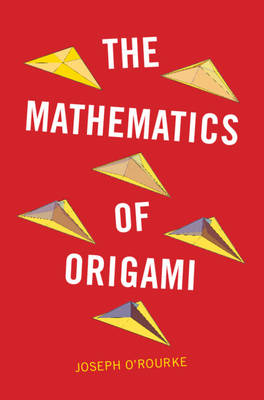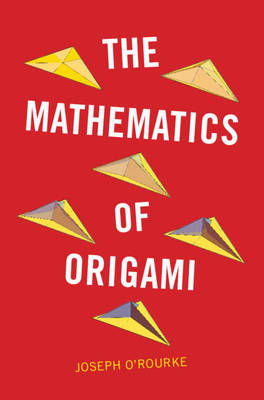
Je cadeautjes zeker op tijd in huis hebben voor de feestdagen? Kom langs in onze winkels en vind het perfecte geschenk!
- Afhalen na 1 uur in een winkel met voorraad
- Gratis thuislevering in België vanaf € 30
- Ruim aanbod met 7 miljoen producten
Je cadeautjes zeker op tijd in huis hebben voor de feestdagen? Kom langs in onze winkels en vind het perfecte geschenk!
- Afhalen na 1 uur in een winkel met voorraad
- Gratis thuislevering in België vanaf € 30
- Ruim aanbod met 7 miljoen producten
Zoeken
Omschrijving
When you see a paper crane, what do you think of? A symbol of hope, a delicate craft, The Karate Kid? What you might not see, but is ever present, is the fascinating mathematics underlying it. Origami is increasingly applied to engineering problems, including origami-based stents, deployment of solar arrays in space, architecture, and even furniture design. The topic is actively developing, with recent discoveries at the frontier (e.g., in rigid origami and in curved-crease origami) and an infusion of techniques and algorithms from theoretical computer science. The mathematics is often advanced, but this book instead relies on geometric intuition, making it accessible to readers with only a high school geometry and trigonometry background. Through careful exposition, more than 160 color figures, and 49 exercises all completely solved in an Appendix, the beautiful mathematics leading to stunning origami designs can be appreciated by students, teachers, engineers, and artists alike.
Specificaties
Betrokkenen
- Auteur(s):
- Uitgeverij:
Inhoud
- Aantal bladzijden:
- 208
- Taal:
- Engels
Eigenschappen
- Productcode (EAN):
- 9781009687386
- Verschijningsdatum:
- 18/12/2025
- Uitvoering:
- Paperback
- Formaat:
- Trade paperback (VS)
- Afmetingen:
- 152 mm x 229 mm
- Gewicht:
- 285 g

Alleen bij Standaard Boekhandel
+ 129 punten op je klantenkaart van Standaard Boekhandel
Beoordelingen
We publiceren alleen reviews die voldoen aan de voorwaarden voor reviews. Bekijk onze voorwaarden voor reviews.









